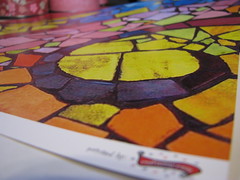Both artists and art dealers are considered to be art professionals both of which earn a living from forms of art. The artist is of course the one who is the creator of the art itself, whatever it may be and the art dealer is the person that the artist generally will turn to in order to be able to market and sell their art.
Artists come in various forms there is no restriction these days on what is considered art, whether you are looking at the normal types such as paintings, sculptures or clothing designers even for that matter. The art dealer often will be purchasing the art from the artists with the intention of on-selling them to collectors and the like. The art dealer therefore must also be knowledgeable in the market for the particular type of art and also in their location of artists with styles relevant to their client base.
Often the artists require the assistance of the dealers for the display and sale in galleries or studios for example although it is not entirely unusual for the artists to open their own galleries and studios doing the marketing for their material themselves. The transition from artist to art dealer therefore can be a fine line where as the transition from art dealer to artist is a much more difficult task.
Next to define is the difficult question of what is art anyway? If you took a group of individuals and ask them that specific question you will no doubt find you have a variety or responses. Your definition of art is therefore not necessarily my definition of art. Some people will see an art work and consider it to be not worthy of further attention whereas another individual may view the piece and consider it has amazing artistic values. From this also comes the phrase Outsider Art.
This basically broken down means art that is not within the norm of the majority population consideration of art. Many people who have had no specific training will create items of their own impression which may not fall into the standards currently on offer and can therefore obtain the label of outsider artists.
Some people consider that outsider art is created by artists who have received no formal training and therefore is perhaps not worthy. However you will find there are various forms of outsider art in open view to you on a daily basis. The way you're neighbor chooses to display their garden gnome collection may be considered a concept of outsider art. However that may be stretching the limits of outsider art just slightly.
The forms of outsider art can be considered in paintings not following normal processes but can also continue to a variety of different styles of art, often unheard of by normal collectors. Art forms such as tramp art or folk art. Generally, but not always, these creations of outsider art are 100% original in that the artist will then move on to create something of an entirely different theme or even material depending on what form of art it is in the first place.
Generally an artist of any form, the standard artist or the outsider artist, is defined by the style of art that they create. Whether this is in the form of writing, photography, sculpture or even music the choices are almost limitless. You can consider that the popularity of the art itself is due to the impression the art gives to the viewer in whatever form it is. If someone likes what the artist has created then their art is considered by others and not just a simple form of expression for the eyes of the artist only.
In my opinion art is in the eye of the viewer. There are many times I have seen where some item is noted as artistic and yet I can not see any feeling or visual beneficial effect from the piece itself does that mean I am able to decide that this is not art? Of course it can not, our grandparents considered everything we did as children to be art, even the often scary and misshapen clay works we did in our classrooms and they treasure these items for many years, is it art? To them it is. -
Michiel Van Kets












 Auctions can be a lot of fun, especially since they usually publish a listing of what will be for sale and allow you to preview the items before hand. You can even leave bids with the auctioneer if you are unable to stay for the entire auction. Be prepare to pay cash and to bid on an entire box of junk for just for one item. A thing to remember is at the end of an auction there are usually a lot of items left behind, just ask, often anything left behind is free for the taking. This is an overnight case I got for $7.00 at an auction, it’s in excellent condition just waiting to be painted or decoupaged.
Auctions can be a lot of fun, especially since they usually publish a listing of what will be for sale and allow you to preview the items before hand. You can even leave bids with the auctioneer if you are unable to stay for the entire auction. Be prepare to pay cash and to bid on an entire box of junk for just for one item. A thing to remember is at the end of an auction there are usually a lot of items left behind, just ask, often anything left behind is free for the taking. This is an overnight case I got for $7.00 at an auction, it’s in excellent condition just waiting to be painted or decoupaged. 





